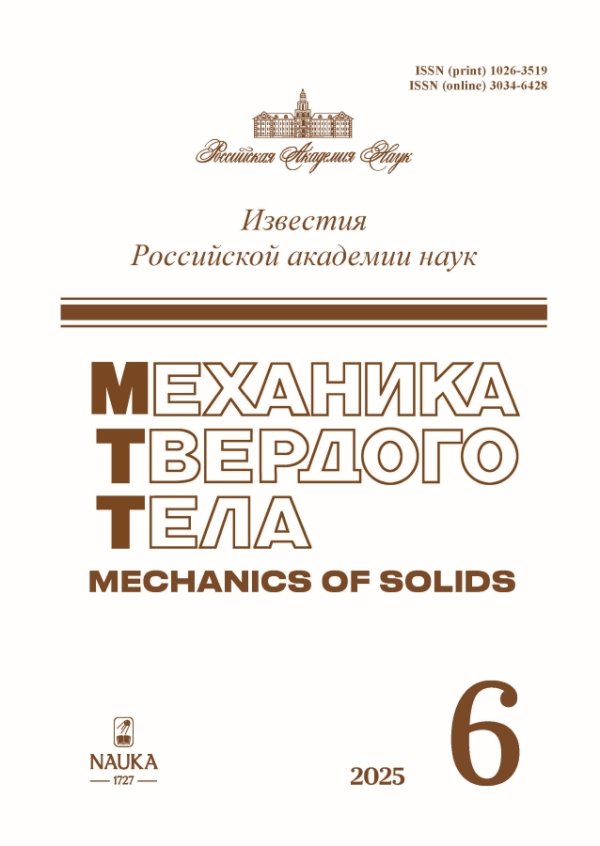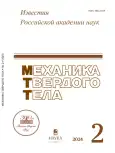Kahramanmaras earthquake on February 6, 2023: mathematical models, estimates and methods of seismic protection
- Authors: Karakozova A.I.1, Kuznetsov S.V.1,2,3, Mondrus V.L.1
-
Affiliations:
- Moscow State University of Civil Engineering
- Ishlinsky Institute for Problems in Mechanics RAS
- Bauman Moscow State Technical University
- Issue: No 2 (2024)
- Pages: 90-102
- Section: Articles
- URL: https://journal-vniispk.ru/1026-3519/article/view/269824
- DOI: https://doi.org/10.31857/S1026351924020034
- EDN: https://elibrary.ru/uwqrql
- ID: 269824
Cite item
Full Text
Abstract
The recent earthquake in Turkey and Syria occurred on February 6, 2023. In the Kahramanmaras region the earthquake had an estimated magnitude of Mw7.8, and reached intensity XI by the modified Mercalli scale. The earthquake had catastrophic consequences, leading to the deaths of more than 52,800 people, as well as the multiple damages of the structures and buildings. The paper relates to the analyses of the seismograms and the detection of an unusually strong delta impulse, which can be associated with the arrival of a horizontally polarized S-wave.
Keywords
About the authors
A. I. Karakozova
Moscow State University of Civil Engineering
Author for correspondence.
Email: karioca@mail.ru
Russian Federation, Moscow
S. V. Kuznetsov
Moscow State University of Civil Engineering; Ishlinsky Institute for Problems in Mechanics RAS; Bauman Moscow State Technical University
Email: karioca@mail.ru
Russian Federation, Moscow; Moscow; Moscow
V. L. Mondrus
Moscow State University of Civil Engineering
Email: karioca@mail.ru
Russian Federation, Moscow
References
- USGS, 6 February 2023. “USGS earthquake catalogue”. Archived from the original on 7 February 2023.
- National Earthquake Information Center (6 February 2023). “M 7.8 – 26 km ENE of Nurdağı, Turkey”. United States Geological Survey (2023); URL: https://earthquake.usgs.gov/earthquakes/eventpage/us6000jllz/executive
- Emre Ö., Duman T.Y., Özalp S. et al. Active fault database of Turkey // Bull. Earthquake Eng. 2018. № 16 (8). P. 3229–3275; https://doi.org/10.1007/s10518-016-0041-2
- Kawoosa V.M., Scarr S., Gerry D. (eds.). 10,000 tremors. Reuters. 2 March (2023); URL: https://www.reuters.com/graphics/TURKEY-QUAKE/AFTERSHOCKS/dwpkdzklevm/
- Kinoshita S. Low-frequency and trend compensation of broadband seismograms // Earth Planet Space. 2012. № 64. e5–e8; https://doi.org/10.5047/eps.2012.02.002
- Larsonnier F. et al. Comparison on seismometer sensitivity following ISO 16063-11 standard // 19th International Congress of Metrology. 2019. Paper 27003; https://doi.org/10.1051/metrology/201927003
- Singh N., Tampubolon D., Yadavalli V.S.S. Time series modelling of the Kobe-Osaka earthquake recordings // Int. J. Math. Math. Sci. 2002. № 29 (8). P. 467–479; https://doi.org/10.1155/S0161171202007548
- Eberhard M.O. et al. The M W 7.0 Haiti earthquake of January 12, 2010; USGS/EERI Advance Reconnaissance Team report. U.S. Geological Survey Report 2010–1048. 2010; URL: http://pubsdata.usgs.gov/pubs/of/2010/1048/index.html
- DesRochers R. et al. Overview of the 2010 Haiti earthquake // Earthquake Spectra. 2011. № 27 (1, suppl. 1). P. 1–21; https://doi.org/10.1193/1.3630129
- Magnitude 7.0 HAITI Tuesday, January 12, 2010 at 21:53:09 UTC. IRIS (2010); URL: https://www.iris.edu/hq/files/programs/education_and_outreach/retm/tm_100112_haiti/100112haiti.pdf
- Bormann P., Wielandt E. Seismic signals and noise. In: Bormann P. (Ed.), New Manual of Seismological Observatory Practice 2 (NMSOP2). Potsdam: GFZ. 2013. P. 1–62; https://doi.org/10.2312/GFZ.NMSOP-2_ch4
- Ye W., Entezari A. A geometric construction of multivariate sinc functions // IEEE Trans. Image Processing. 2012. № 21 (6). P. 2969–2979; https://doi.org/10.1109/TIP.2011.2162421
- Jóźwiak B., Orczykowska M. & Dziubiński M. Fractional generalizations of Maxwell and Kelvin-Voigt models for biopolymer characterization // PLoS ONE. 2015. № 10 (11). Paper e0143090; https://doi.org/10.1371/journal.pone.0143090
- Goldstein R.V., Kuznetsov S.V., Khudyakov M.A Study of forced vibrations of the Kelvin-Voigt model with an asymmetric spring // Mech. Solids. 2015. № 50 (3). P. 294–304; https://doi.org/10.3103/S0025654415030061
- Kuznetsov S.V. Fundamental and singular solutions of Lamé equations for media with arbitrary elastic anisotropy // Quart. Appl. Math. 2005. № 63 (3). P. 455–467.
- Smith K. Frank Lloyd Wright and the Imperial Hotel: A postscript // The Art Bulletin. 1985. № 67 (2). P. 296–310; https://doi.org/10.1080/00043079.1985.10788262
- Hammer J. The Great Japan earthquake of 1923 // Smithsonian Magazine. 2011. Paper 1764539.
- Dobry R. et al. Damping/global energy balance in FE model of bridge foundation lateral response // Soil Dynam. Earthquake Eng. 2003. № 23 (6). P. 483–495; https://doi.org/10.1016/S0267-7261(03)00050-2
- Teyssandier J.P., Combault J., Pecker A. Rion Antirion: le pontqui defieles seismes // La Recherche. 2000. № 334. P. 42–46.
- Cremer C., Pecker A., Davenne L. Cyclic macro-element of soilstructure interaction: material and geometrical nonlinearities // Int. J. Numer. Anal. Meth. Geomech. 2001. № 25 (13). P. 1257–1284.
- Granular metamaterials. Booklet. Adelaide, Australia: Marathon Allaince. 2022; URL: https://www.marathonalliance.com.au/metamaterials
- Begambre-Carrillo O.J. et al. Passive seismic protection systems with mechanical metamaterials: A current review // Struct. Eng. & Mech. 2022. № 82 (4). Article 417; https://doi.org/10.12989/sem.2022.82.4.417
- Mirzaev I., Turdiev M. Vibrations of buildings with sliding foundations under real seismic effects // Constr. Unique Build. Struct. 2021. № 94. Article № 9407; https://doi.org/ 10.4123/CUBS.94.7
- Mirzaev I., Yuvmitov A., Turdiev M., Shomurodov J. Influence of the vertical earthquake component on the shear vibration of buildings on sliding // E3S Web Conf. 2021. № 264. Article № 02022; https://doi.org/10.1051/e3sconf/202126402022
- Avesth P., Mukerji T., Mavko G. Quantitative Seismic Interpretation. Cambridge, UK: Cambridge University Press. 2005. 408 p.; https://doi.org/10.1017/CBO9780511600074
- Lucchesi M., Pagni A. Longitudinal oscillations of bimodular rods // Int. J. Struct. Stability Dynam. 2005. № 5 (1). P. 37–54; https://doi.org/10.1142/S0219455405001490
- Pelat A., Gautier F., Conlon S.C., Semperlotti F. The acoustic black hole: A review of theory and applications // J. Sound Vibr. 2020. № 476. Paper 115316; https://doi.org/10.1016/j.jsv.2020.115316
- Goldstein R.V., Dudchenko A.V., Kuznetsov S.V. The modified Cam-Clay (MCC) model: cyclic kinematic deviatoric loading // Arch. Appl. Mech. 2016. № 86 (12). P. 2021–2031; https://doi.org/10.1007/s00419-016-1169-x
Supplementary files










